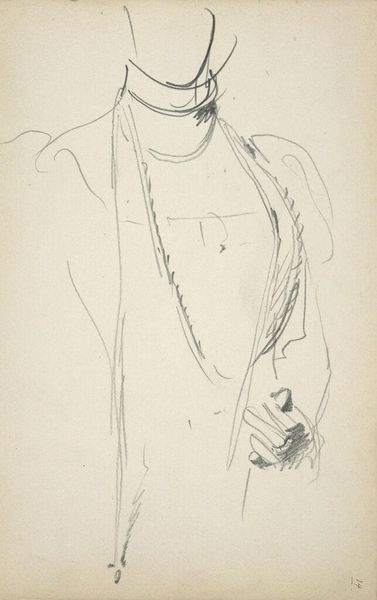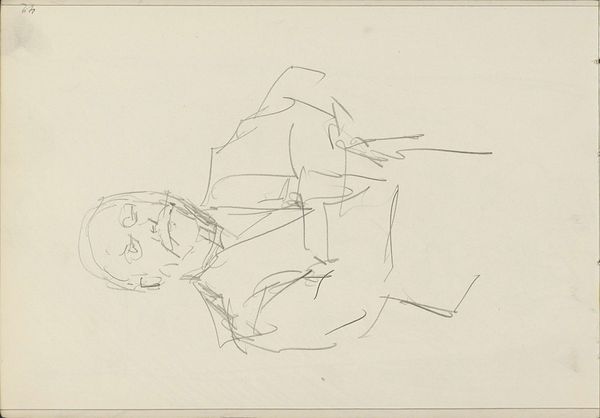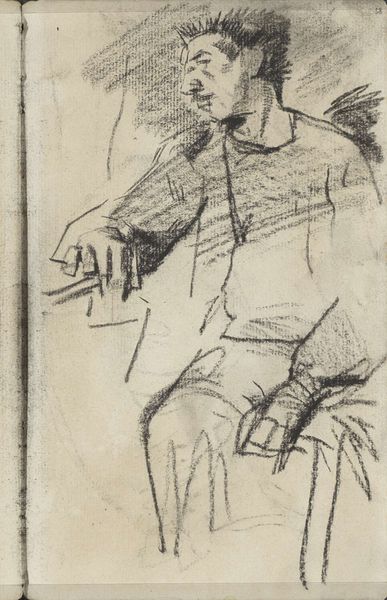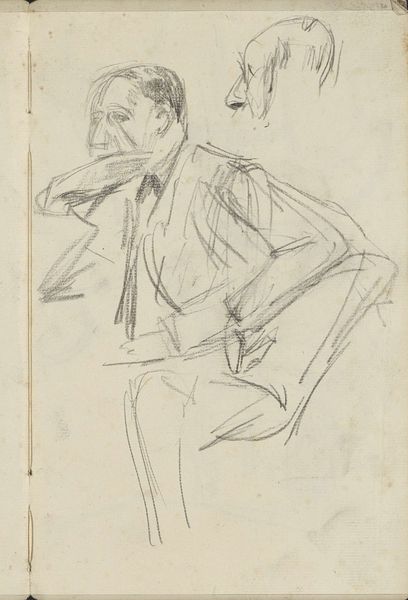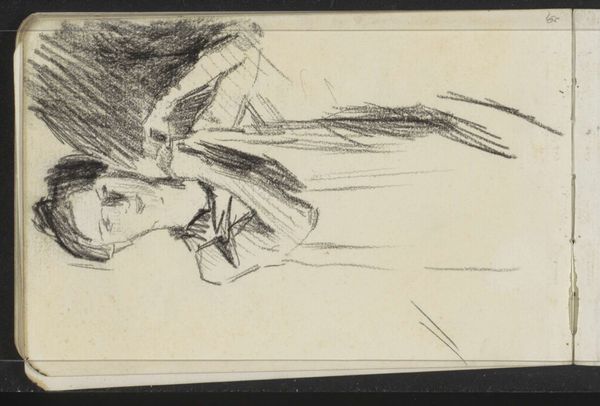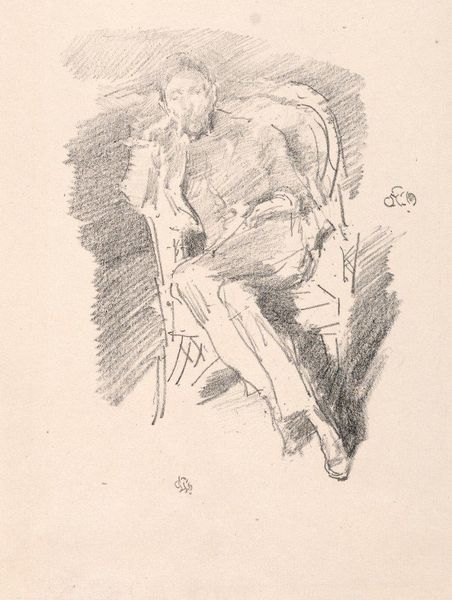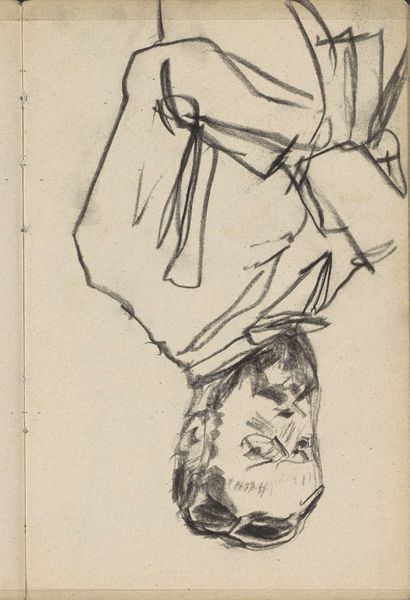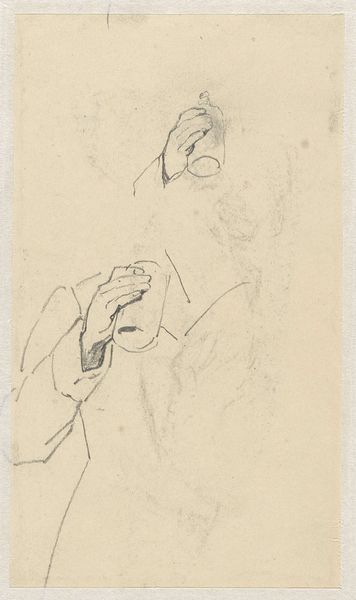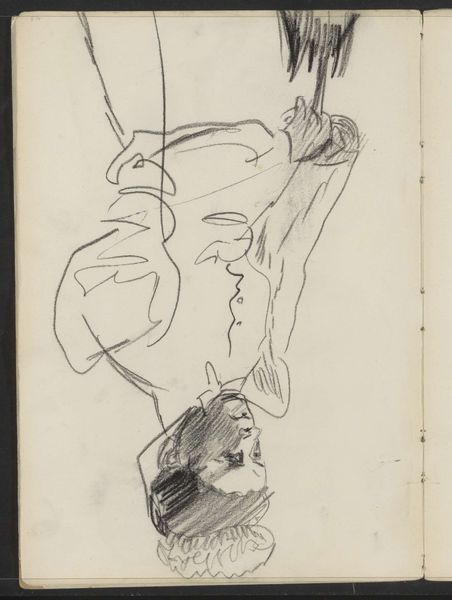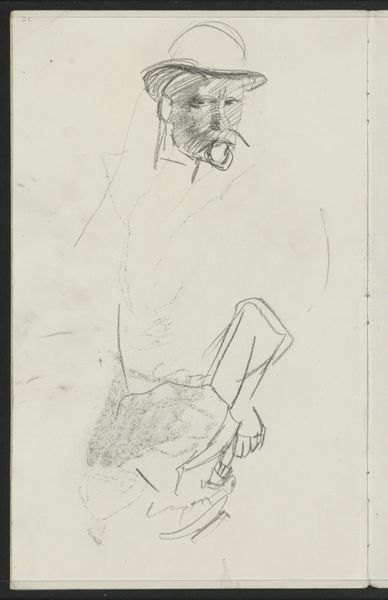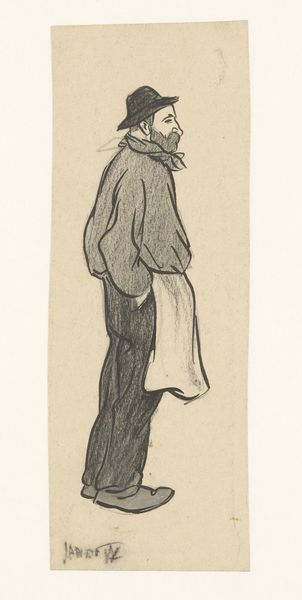
drawing, pencil
#
portrait
#
drawing
#
pencil sketch
#
figuration
#
pencil
#
academic-art
Dimensions: height 198 mm, width 109 mm
Copyright: Rijks Museum: Open Domain
Editor: This is "Man aan tafel, ten halven lijve," a pencil drawing from between 1811 and 1873 by Pieter van Loon, housed in the Rijksmuseum. It's quite a simple sketch, almost melancholic, showing a man sitting at a table, his face obscured by his hand. What's most striking to you about it? Curator: Well, immediately my interest lies in the material reality of its creation. Pencil on paper - common materials, easily accessible. Consider the labour involved. A hand meticulously applying graphite to paper, building form. Is this a study? A preparatory sketch for a larger work? That labour is inherent to the value, defying notions of ‘high’ art, wouldn’t you say? Editor: I suppose it depends on whether he intended it as a final work, or something more utilitarian. Curator: Exactly! And that distinction, the one *we* place, it’s rooted in the social hierarchy of art versus craft. The material itself—graphite, refined and shaped, paper pulped and pressed—speaks to the manufacturing processes of the time. Who had access to these materials? Who controlled their production? The sitter’s garments, the way it’s rendered – does that communicate wealth and power through sartorial display or some alternative method? Editor: That's interesting. I hadn't really thought about the paper and pencil as commodities, but of course, they are. I was more focused on trying to understand his emotion through the pose. Curator: Emotion is secondary; think about what these objects represented regarding 19th century social conditions. Editor: That definitely gives me a different perspective to consider when looking at drawings. Thank you! Curator: Indeed! We have unveiled both social stratifications and access based on this artist’s use of accessible materials.
Comments
No comments
Be the first to comment and join the conversation on the ultimate creative platform.
